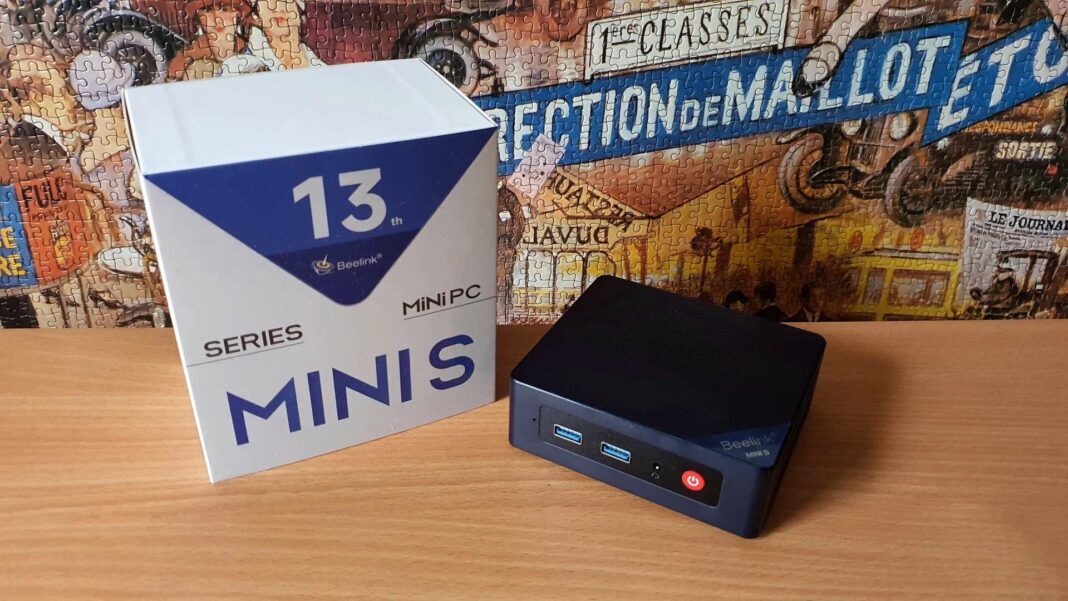The Beelink Mini S13 is a compact mini-PC designed for entry-level users, featuring modern connectivity options like WiFi 6 and Bluetooth 5.2. While its design closely resembles the Mini S12, it offers adequate performance for everyday tasks with an Intel Twin Lake N150 processor and 16 GB of RAM. The device includes basic accessories, runs Windows 11 without bloatware, and provides user-friendly access for upgrades, although it lacks USB Type-C and faster storage options.
Discovering the Beelink Mini S13: A Compact Powerhouse
Not long ago, we explored the Twin Lake N150 integration through the AceMagic V1 N150. While AceMagic managed to shrink the dimensions of its PC using the Intel chip, it fell short on functionality, offering outdated features like WiFi 5. Fast forward to 2025, and such limitations feel antiquated.
Enter the Beelink Mini S13, which may not boast all the latest features but presents a solid set of specifications for an entry-level mini-PC. With a 1 GbE Ethernet connection, WiFi 6, and Bluetooth 5.2, this device offers a range of modern connectivity options. Although slightly larger than the V1 N150, the Mini S13 remains compact enough to serve various needs without occupying too much space.
Design and Build: Familiar Yet Functional
Beelink has opted for a design philosophy of “if it ain’t broke, don’t fix it,” with the Mini S13 closely resembling its predecessor, the Mini S12. The casing is identical, featuring a distinctive black insert on the front, a blue body, and a striking red power button.
In terms of dimensions, the Mini S13 matches the Mini S12, measuring just 115 mm in length, 102 mm in width, and a mere 39 mm in thickness. While it’s not as compact as the AceMagic V1 N150, it still qualifies as one of the smallest mini-PCs available, making it an ideal choice for limited desk space.
Weighing in at under 310 grams, it is a bit heftier than the V1 N150 but remains lightweight. However, users should note that the power brick adds about 140 grams, which can be a bit cumbersome for such a compact device.
Connectivity: Meeting Basic Needs
While the Mini S13 doesn’t push the envelope in terms of innovation, it does provide adequate connectivity for everyday tasks. The absence of USB Type-C is a glaring omission, particularly in 2025, where one would expect this connector to be standard. Additionally, there’s no USB4 or DisplayPort support.
On the front, you’ll find two USB-A 3.2 Gen 2 ports, a 3.5 mm audio jack, and a Clear CMOS button alongside the power button. The back of the device features two HDMI 2.0 ports (4K@60 Hz) and another pair of USB-A 3.2 Gen 2 ports, while a 1 GbE RJ45 Ethernet port ensures stable network connectivity. The DC jack is also present for power connection.
Accessories and Software: Minimalist Approach
In line with its entry-level positioning, the Mini S13 comes with a bare minimum of accessories. Upon unpacking, users will find the power brick, a non-detachable power cable, an HDMI cable, and a small VESA mounting kit, which includes two metal plates and screws for attaching the device to a compatible support.
On the software side, Beelink takes a no-frills approach, providing a pre-installed Windows 11 without any additional software or applications. This can be viewed as a double-edged sword: some may miss having tools to facilitate usage, while others will appreciate the absence of bloatware. The setup process is straightforward, although the Windows update can vary in duration based on the number of updates required.
Performance Insights: Everyday Usability
Powered by the Intel Twin Lake N150 processor, the Mini S13 is not designed for high-performance tasks, but its four cores and maximum frequency of 3.6 GHz make it suitable for everyday activities. With 16 GB of RAM, it meets current standards, and although it relies on integrated graphics due to space constraints, it performs adequately for daily use.
The Mini S13 is available with different storage options, including a 1 TB variant, while our test model featured a 512 GB SATA SSD. Surprisingly, the device includes two M.2 ports capable of supporting NVMe SSDs, yet the SATA technology is a missed opportunity for faster storage speeds. It’s worth noting that the RAM is non-upgradable, as the board supports a maximum of 16 GB with only one SO-DIMM slot available.
Accessing the internal components is user-friendly, as Beelink has designed the device with easily removable screws, avoiding the common issue of hidden screws under rubber feet. This thoughtful design makes it simple to upgrade or maintain the Mini S13.
